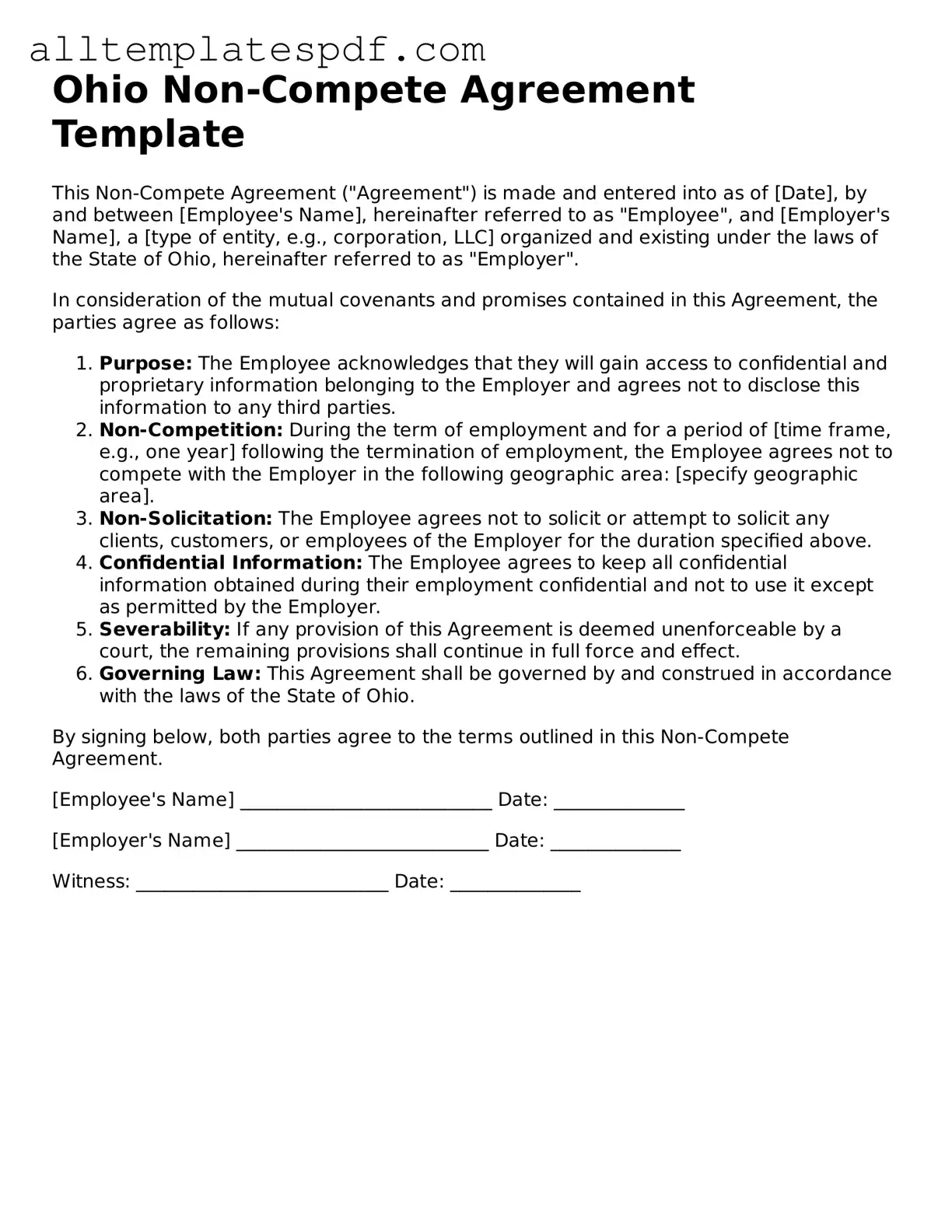Filling out the Ohio Non-compete Agreement form can be a straightforward process, but many individuals make common mistakes that can lead to complications later on. One of the most frequent errors is failing to read the entire agreement thoroughly. This document outlines important terms and conditions that could significantly impact one’s career and future opportunities. Skimming through the text may result in overlooking critical clauses that define the scope of the agreement.
Another common mistake is not clearly defining the geographic area covered by the non-compete clause. A vague description can lead to confusion and potential disputes down the line. It is essential to specify the exact locations where the restrictions apply to avoid misunderstandings that could affect employment prospects.
People often neglect to specify the duration of the non-compete agreement. Without a clear timeframe, the agreement may be seen as indefinite, which could be deemed unreasonable in a court of law. It is crucial to establish a reasonable duration that aligns with industry standards to ensure enforceability.
In addition, some individuals fail to consider the implications of the agreement on their future employment. A poorly constructed non-compete can severely limit job opportunities in the same field. It is advisable to consult with a legal professional to understand how the terms might restrict future career choices.
Another mistake is not including a clause for consideration, which is a legal term for something of value exchanged between parties. Without this, the agreement may not be enforceable. It is important to ensure that both parties understand what is being exchanged to uphold the validity of the agreement.
People sometimes overlook the importance of including specific job titles or roles affected by the non-compete. A blanket statement that applies to all positions can create unnecessary limitations. Clearly defining the positions subject to the agreement can prevent future conflicts.
Additionally, failing to keep a copy of the signed agreement is a common oversight. Having a personal copy is essential for reference and proof of the terms agreed upon. This can be crucial if any disputes arise later on.
Some individuals also forget to update the agreement when circumstances change, such as a promotion or a shift in job responsibilities. It is vital to revisit and revise the non-compete agreement to reflect any changes in the employment relationship.
Lastly, many people do not seek legal advice before signing the agreement. Consulting with a lawyer can provide valuable insights and help identify potential pitfalls that could arise from the terms laid out in the document. Taking this step can save individuals from future legal challenges and ensure that their rights are protected.
